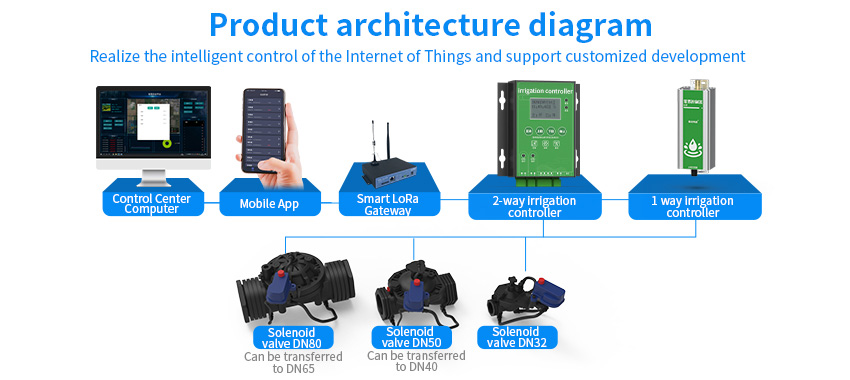What is an automatic irrigation controller
An automatic irrigation controller is a device used in agricultural and landscape irrigation systems to automate the process of watering plants. It is designed to efficiently manage and regulate irrigation schedules, ensuring that plants receive the appropriate amount of water at the right time.

The controller utilizes advanced technology, including sensors, timers, and programming capabilities to control irrigation operations. It is typically equipped with sensors that detect soil moisture levels, weather conditions, and other relevant parameters. These sensors provide real-time data to the controller, allowing it to make informed decisions about when and how much water to distribute.
The controller’s programming capabilities enable users to set specific irrigation schedules based on factors like plant type, soil type, and environmental conditions. It allows for flexibility in scheduling, ensuring that irrigation cycles are adjusted according to changing needs.
With an automatic irrigation controller, users can eliminate the need for manual monitoring and intervention in the irrigation process. The controller can adjust irrigation schedules based on actual soil moisture levels, preventing overwatering or underwatering of plants. This improves water efficiency, reduces water waste, and promotes healthier plant growth.
The composition of automatic irrigation controller
Sensors: These are used to detect soil moisture levels, weather conditions, and other relevant parameters. The sensors provide real-time data to the controller, allowing it to make informed decisions about when and how much water to distribute.

Timers: The controller is equipped with timers that regulate the duration and frequency of irrigation cycles. The timers ensure that plants receive the appropriate amount of water at the right time, based on irrigation schedules set by the user.
Programming capabilities: The irrigation controller’s programming capabilities allow users to set specific irrigation schedules based on factors like plant type, soil type, and environmental conditions. This feature allows for flexibility in scheduling, ensuring that irrigation cycles are adjusted according to changing needs.
Rain sensors: Many advanced controllers can be equipped with rain sensors that detect rainfall and suspend irrigation when necessary. This feature helps prevent overwatering during wet periods and minimizes water waste.
Wireless connectivity: Some modern controllers can be connected to wireless networks, enabling remote monitoring and control. This feature allows users to access and manage their irrigation systems from anywhere, using mobile devices or computer interfaces.
Features of automatic irrigation controller
Sensor-based irrigation: The controller uses sensors to measure soil moisture levels, weather conditions, and other parameters. This data is used to determine the optimal irrigation schedule, ensuring that plants receive the right amount of water based on their requirements.

Programmable scheduling: Users can set specific irrigation schedules based on plant types, soil conditions, and environmental factors. This feature allows for customized watering plans that can be adjusted as needed.
Multiple zone control: The controller can manage irrigation in multiple zones or areas independently. This feature is particularly useful for landscapes with different plant types or varying soil moisture needs.
Rain sensor integration: Many automatic irrigation controllers can be integrated with rain sensors. These sensors detect rainfall and prevent unnecessary watering during wet periods, conserving water and preventing overwatering.
Seasonal adjustments: The controller can automatically adjust watering schedules based on seasonal changes. This ensures that irrigation practices align with the changing needs of plants throughout the year.
Water budgeting: Some controllers offer water budgeting features, allowing users to input specific water allocation limits. The controller then adjusts the irrigation schedule accordingly to stay within the defined water budget.

Remote access and control: Advanced controllers can be connected to wireless networks, enabling remote access and control. Users can monitor and adjust irrigation schedules from anywhere using mobile devices or computer interfaces.
How to use automatic irrigation controller?
1. Set a scheduled task
The user opens the power button, first manually on the controller equipment automatically in accordance with the set program for watering, can be connected to two solenoid valves, set two groups of watering procedures. The irrigation controller sends control instructions remotely through the local control of the mobile phone. Set auto travel on your phone or set time correction on your device.

2. Irrigation duration/start watering time can be set
The irrigation controller can set the start time of irrigation on the same day and the duration of irrigation at that time according to the irrigation demand.
When you have all these Settings in place, you can start lazy irrigation.
Parameters of automatic irrigation controller
Power supply: 12V-24V DC
Operating temperature: -20~60°C
Maximum power consumption: 0.4W
Working humidity: 15~90% (no condensation)
Output signal: 4G
Power consumption: 0.15 W or less
Response time: ≤1s
Working pressure: 0.9-1.1 ATM